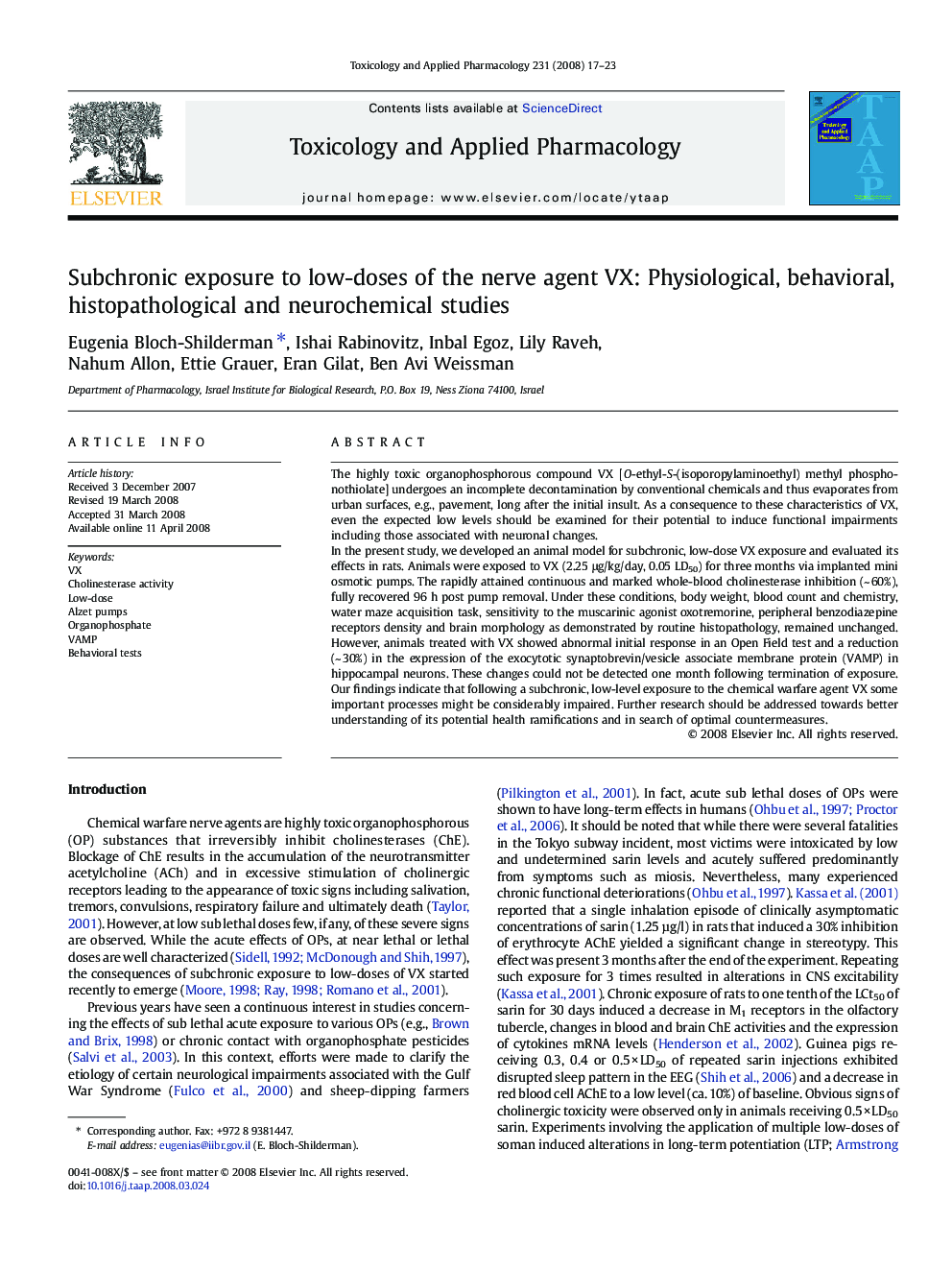| Article ID | Journal | Published Year | Pages | File Type |
|---|---|---|---|---|
| 2571193 | Toxicology and Applied Pharmacology | 2008 | 7 Pages |
The highly toxic organophosphorous compound VX [O-ethyl-S-(isoporopylaminoethyl) methyl phosphonothiolate] undergoes an incomplete decontamination by conventional chemicals and thus evaporates from urban surfaces, e.g., pavement, long after the initial insult. As a consequence to these characteristics of VX, even the expected low levels should be examined for their potential to induce functional impairments including those associated with neuronal changes.In the present study, we developed an animal model for subchronic, low-dose VX exposure and evaluated its effects in rats. Animals were exposed to VX (2.25 μg/kg/day, 0.05 LD50) for three months via implanted mini osmotic pumps. The rapidly attained continuous and marked whole-blood cholinesterase inhibition (~ 60%), fully recovered 96 h post pump removal. Under these conditions, body weight, blood count and chemistry, water maze acquisition task, sensitivity to the muscarinic agonist oxotremorine, peripheral benzodiazepine receptors density and brain morphology as demonstrated by routine histopathology, remained unchanged. However, animals treated with VX showed abnormal initial response in an Open Field test and a reduction (~ 30%) in the expression of the exocytotic synaptobrevin/vesicle associate membrane protein (VAMP) in hippocampal neurons. These changes could not be detected one month following termination of exposure. Our findings indicate that following a subchronic, low-level exposure to the chemical warfare agent VX some important processes might be considerably impaired. Further research should be addressed towards better understanding of its potential health ramifications and in search of optimal countermeasures.
